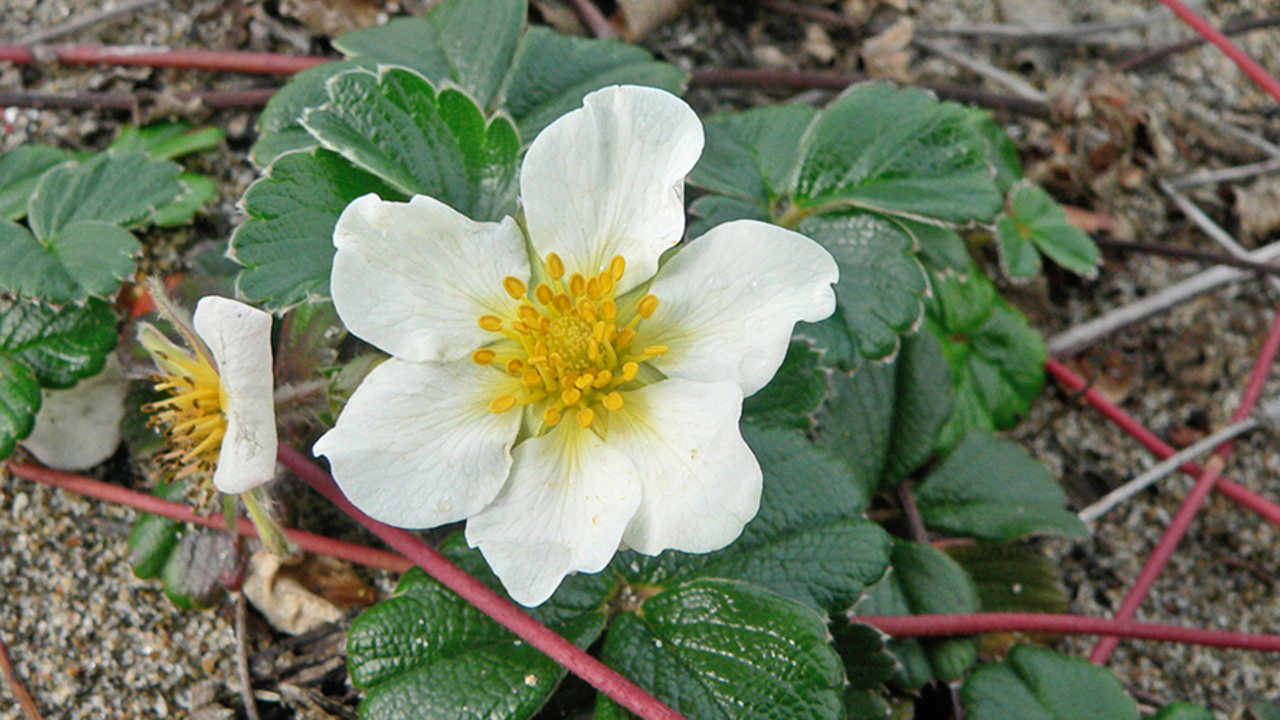Our Romantic Plant of the Season

Eric Poelzl/Parks Conservancy
If your loved one takes you out to a nice restaurant this Valentine’s Day and you still have room for dessert, most likely you will see chocolate-covered strawberries on the menu. As you bite into one of nature’s most delectable fruits, you may take some time to ponder the plant that this delicious treat comes from.
The fruit we love to devour this time of year is mostly a cultivar of two species native to North America—Fragaria virginiana and Fragaria chiloensis—known as the hybrid F. x ananassa.
There are several native species of strawberries present in California, including F. chiloensis, but one common to many parts of the state and native to almost 80 percent of the lower 48 states is Fragaria vesca, commonly known as woodland or wild strawberry.
As its name suggests, this plant commonly occurs in forest or woodland habitats. In the Bay Area, it is also found in more open habitats including under scrub habitat on hillsides, in meadows and grasslands. The plant is a low-growing perennial forming basal (base of stem) rosettes of compound leaves, and produces small, white flowers in clusters.
Many of the native plant nurseries in the Golden Gate National Parks grow this plant for restoration in several different habitat types. Most often, we collect the stolons—long horizontal stems that run along the ground and produce roots and shoots at the nodes or joints of the stems. The nurseries can also propagate the plants from seed, but because humans are not the only creatures that enjoy snacking on these tasty fruits, they are often difficult to find when ripe. The stolons easily root in a media we use called perlite (heated, “puffed” volcanic glass). They are then transplanted into larger pots filled with our custom-mixed potting media that is made mainly from compost produced in the Presidio.
Once the plants are out-planted and established in the field, they begin to send out new stolons and quickly fill-in open spaces in our restoration sites—something we all like to see! Because of the plant’s ability to easily establish and cover the surface soils of steep slopes, researchers have suggested that woodland strawberry might also be an important species for reducing erosion potential after a fire.
From an ethnobotanical standpoint, the plant has many uses. Aside from picking the fruit as a food source, Native Americans used stolons for tying and binding, applied dried and powdered leaves to open sores as disinfectant, made the leaves into a medicinal tea for relieving diarrhea and dysentery, chewed and applied the leaves as a poultice to burns, and used the dried leaves for softening and removing tartar and dental plaque off teeth.
So enjoy your decadent dessert from this amazing fruit, knowing that a related species has and continues to provide many benefits to the people and lands that we love and enjoy throughout our great Golden Gate National Parks.
And if you are a lover of parks and plants, we would love your help planting in the parks. We’re still looking for volunteers to help during the winter planting season. Learn more >>
Resources: U.S. Department of Agriculture, CalFlora, Gregory T. Munger for Fire Effects